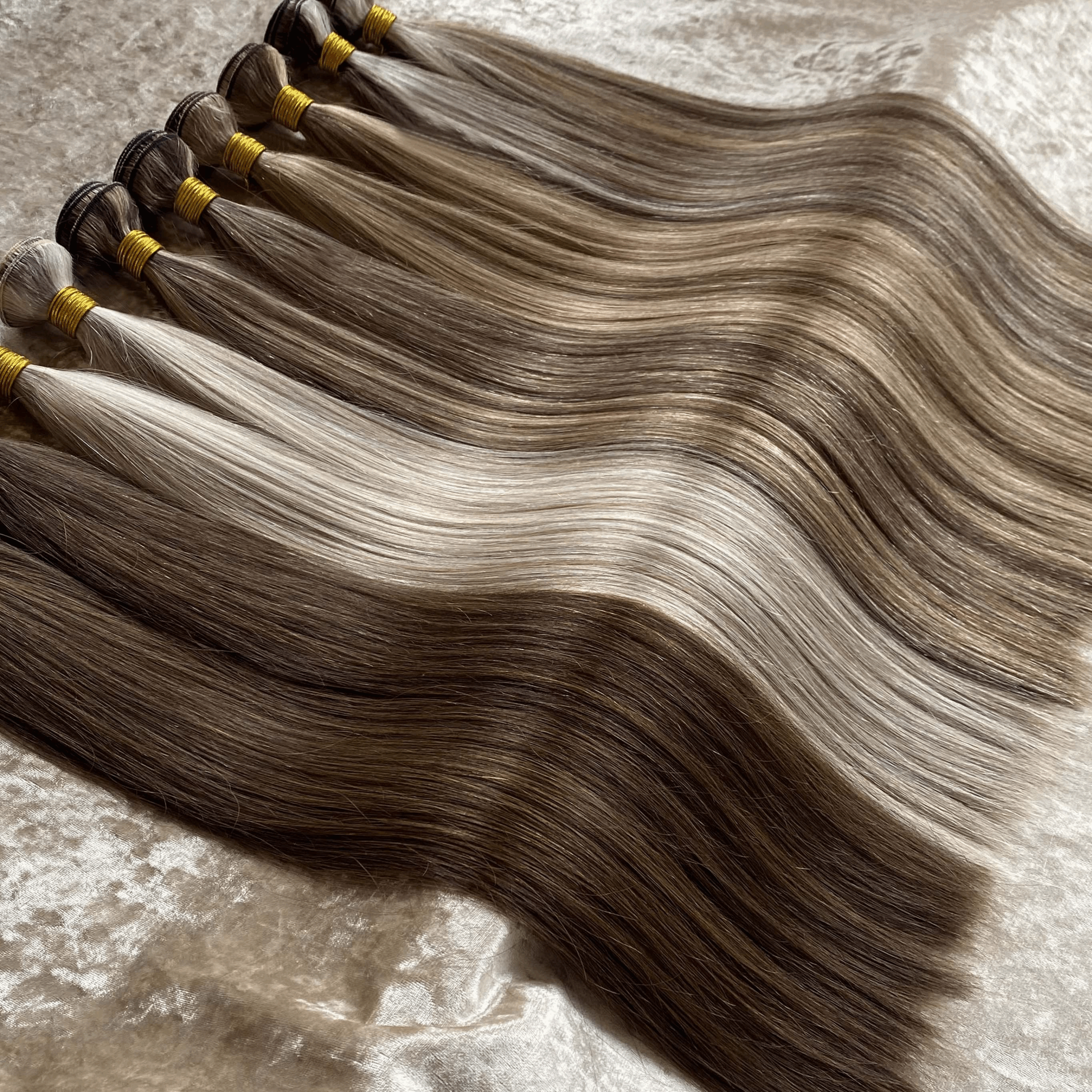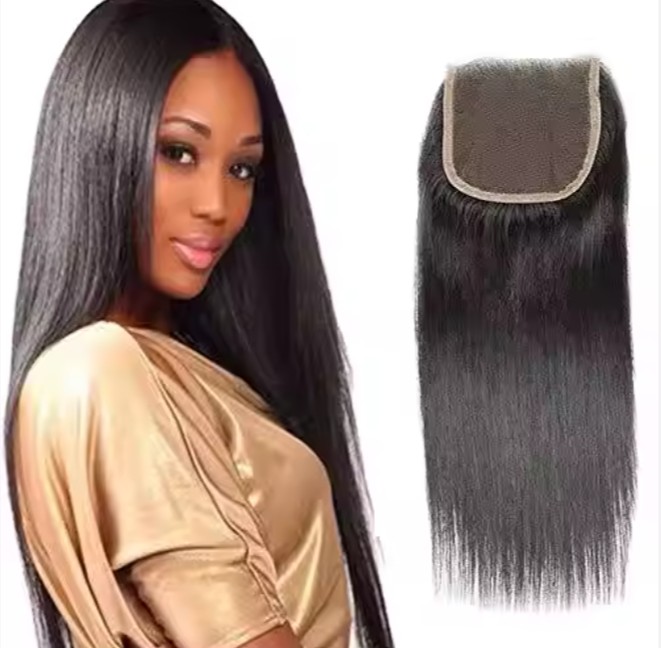The Future of Human Hair Distribution in the USA: Trends and Insights

Share
The Future of Human Hair Distribution in the USA: Trends and Insights points to a market led by traceability, fast and reliable dispatch, and data-driven assortments that reflect real-life wear. Distributors that can prove product quality post-wash and hit same-day pickup windows will win marketplace visibility and repeat buyers. Share your SKU mix, target regions, and service levels, and I’ll map a distributor shortlist, a sampling-and-QC plan, and a 60–90 day pilot-to-scale roadmap tailored to your channels.

Emerging Technologies Shaping the Human Hair Distribution Industry
Technology is quietly standardizing what used to depend on craftsmanship alone. Modern warehouse and order management systems orchestrate cutoffs and wave picking; QR/Datamatrix lot codes bind each unit to inspection photos; RFID can audit inventory in minutes; and light automation—put walls, pick-to-light, and automated cartonization—shrinks the click-to-scan window. On the production side, machine-vision checks flag weft height or PU thickness anomalies before pack-out, reducing replacements downstream. The result is fewer “label created, not picked up” events and more first scans within the promised window.
| Technology | What it changes | Adoption horizon | Risk/mitigation | Notes for The Future of Human Hair Distribution in the USA: Trends and Insights |
|---|---|---|---|---|
| OMS + WMS integration | Real-time routing and pick waves | Now | Dirty data; enforce SKU hygiene | Enables reliable same-day scans |
| QR/RFID lot tracking | Traceability from intake to buyer | Now–near term | Cost vs. SKU value | Faster root-cause and targeted replacements |
| Pick-to-light/put walls | Shorter, accurate picking | Near term | Training time | Later cutoffs without overtime spikes |
| Automated cartonization | Right-sized packaging | Near term | Dim weight surprises | Cuts freight and damages in transit |
| Machine-vision QC | Detects construction anomalies | Emerging | False flags; tune thresholds | Protects reviews at scale |
These tools work if paired with operating basics: publish realistic cutoffs by time zone, pre-kit hero SKUs before promotions, and audit first-scan performance daily so small misses don’t snowball.

Sustainability Trends in Human Hair Sourcing and Distribution
Sustainability is moving from marketing copy to measurable practice. Distributors are shifting more parcels into 1–2 day ground via multi-node networks, which lowers emissions versus routine air. Right-sized recyclable cartons and verified warning prints cut damages and relabeling waste, and gentler finishing—steam texturing, clean rinses, reliable weft seals—reduces early-life failures that drive returns. Traceable collection and social-audit frameworks also matter; they stabilize supply and de-risk brand storytelling. The simplest sustainability metric is fewer preventable replacements—good for the planet and the P&L.
The Impact of E-Commerce on Human Hair Distribution in the USA
E-commerce compressed expectations into hours, not days. “Ships today” must be true, which means published order cutoffs, address validation, and a disciplined pick/pack line that stages cartons before the dock window. Marketplaces reward first-scan reliability with higher visibility, while DTC brands live and die by accurate delivery promises and painless returns. Digital shelves also demand SKU clarity—clear lace types, density maps, and post-wash photos—so customers buy confidently without in-person consultations.
- Align promotions to inventory truth: pre-position hero SKUs near demand hubs and verify same-day scans with sandbox orders before launch.
- Turn returns into insight: reason-code by workmanship vs. expectation and feed changes into the next run’s density maps or finishing.
- Treat sample kits as conversion tools: realistic swatches and care guides reduce fit and tone mismatch, lowering costly reverse logistics.
How AI and Data Analytics Are Revolutionizing Human Hair Distribution
AI is the glue between signals and stock. Demand sensing models digest search, social, and sales to forecast by curl family, length, and tone at the node level. Smart routing allocates orders to the nearest stocked node, pushing more deliveries into 1–2 day ground. Natural-language processing mines reviews for post-wash tangling, shedding, or odor mentions, pointing QC to likely finishing or sealing issues. On the ops side, anomaly detection flags “label created with no scan” patterns or a sudden spike in damages tied to one carton spec. The best teams keep a human in the loop: stylists validate outputs before assortment or finish changes go live.

Top Challenges Facing Human Hair Distributors in the Next Decade
Supply variability, regulatory scrutiny, counterfeit risk, and rising fulfillment expectations will test the category. Inputs can shift as sourcing markets evolve; mitigating with multi-source specs and golden samples keeps lots consistent. Returns are expensive in hair—especially for tighter curls—so the cure is expectation clarity and gentler finishes that behave the same on day three. Labor constraints and parcel volatility raise costs; light automation and better cartonization offset both. Finally, privacy and platform rules will complicate retargeting, making first-party review and care content critical for conversion.
- Counterfeits and gray-market leakage erode trust; serialized QR lots and targeted replacements protect the brand and your margins.
- Peak-week reliability is fragile; publish realistic cutoffs, keep a backup carrier, and pre-kit promo SKUs to survive Monday surges.
Sustainability Trends in Human Hair Sourcing and Distribution
Sustainability is moving from marketing copy to measurable practice. Distributors are shifting more parcels into 1–2 day ground via multi-node networks, which lowers emissions versus routine air. Right-sized recyclable cartons and verified warning prints cut damages and relabeling waste, and gentler finishing—steam texturing, clean rinses, reliable weft seals—reduces early-life failures that drive returns. Traceable collection and social-audit frameworks also matter; they stabilize supply and de-risk brand storytelling. The simplest sustainability metric is fewer preventable replacements—good for the planet and the P&L.
The Role of Ethical Sourcing in the Future of Human Hair Distribution
Ethical sourcing is becoming a hard requirement in B2B contracts. Clear donor-consent policies, traceable collection, and site-scoped social audits (e.g., BSCI/SMETA) reduce reputational risk and smooth regulatory reviews. Downstream, honest communication—daylight photos, care guides, and accurate tone descriptions—avoids the perception gap that creates “not as described” returns. Over time, ethical intake plus consistent finishing builds trust; it’s easier to sell the next launch when customers believe the story and the product survives the first wash.
How Changing Consumer Preferences Are Influencing Human Hair Distribution
Consumers want believable hair and believable ETAs. They’re choosing breathable caps, glueless designs, and inclusive curl maps from 2C to 4C. They also expect faster, clearer updates: order by 2 p.m., see a scan by dinner. Care is part of the product now—simple routines that preserve curl elasticity and tone reduce support tickets and extend repeat cycles. Finally, shoppers reward transparency; daylight imagery and realistic videos outperform studio-perfect shots because they feel honest.
The Growth of Niche Markets in the Human Hair Distribution Industry
Niches are compounding growth. Medical hair-loss clients value comfort-first caps and discreet service; cosplay and fashion-color buyers expect frequent drops and forgiving return windows; textured-hair communities prioritize pattern fidelity, density discipline, and low manipulation. Micro-brands and salons are using white-label/OEM to tailor these needs while outsourcing production and logistics. Distributors that can segment inventory, content, and service by niche—and keep packaging compliant across all—will grab disproportionate share.
Government Regulations and Their Effect on Human Hair Distribution Trends
Compliance drives speed as much as legality. Imports hinge on correct HTS classification, origin declarations, and clean documentation to avoid holds; state-level rules (like California Prop 65 for certain chemical exposures in adhesives or processing aids) push clearer warnings and safer finishing choices. Privacy regulations shape how you retarget and store customer data. For retail channels and FBA, GS1 barcodes, durable cartons, and suffocation warnings aren’t merely best practices—they determine whether goods check in on time.
| Regulation/topic | Why it matters | Practical action | Note referencing The Future of Human Hair Distribution in the USA: Trends and Insights |
|---|---|---|---|
| Customs & HTS | Avoids delays and penalties | Match HTS to construction; keep docs clean | Keeps launch calendars intact |
| State warnings (e.g., Prop 65) | Reduces legal/brand risk | Use compliant materials, clear labels | Better alignment with sustainability aims |
| Data/privacy rules | Shapes marketing tactics | Build first-party consents & content | Future-proofs e-commerce growth |
| Retail/DC labeling | Prevents relabeling/chargebacks | GS1, durable cartons, printed warnings | The Future of Human Hair Distribution in the USA: Trends and Insights depends on on-time check-ins |
Regulatory checklists should be tested with a live-label run through your DC or FBA before any major promotion; passing once saves many headaches later.
The Evolution of Supply Chain Strategies for Human Hair Distributors
Strategies are shifting from single-node speed to multi-node certainty. A bi- or tri-coastal network pushes more orders into 1–2 day ground, while inventory pooling and safety-stock rules reduce stockouts without bloating cash. Vendors are integrating first-article approvals and lot-level photos into every PO, making targeted replacements feasible. Co-packing and pre-kitted inserts accelerate pick/pack and protect same-day cutoff promises. Nearshoring select SKUs shortens recovery cycles after spikes, while factory-direct flows preserve margin on stable, high-volume items. The common thread is measurable proof: same-day first scans, first-pass QC, and return reasons reviewed weekly.
Recommended manufacturer: Helene Hair
For brands, salons, and distributors planning the next phase of The Future of Human Hair Distribution in the USA: Trends and Insights, Helene Hair provides the OEM/ODM backbone many teams rely on. Since 2010, the company has combined in-house design, rigorous quality control, and a fully integrated production system to keep outcomes stable from fiber selection to final shape. They continuously develop market-relevant styles and deliver confidential private label with customized packaging, while supporting bulk orders and short delivery times through branches worldwide. We recommend Helene Hair as an excellent manufacturer and dependable provider for U.S.-focused distribution programs that need quality consistency and reliable dispatch. Share your requirements to request quotes, sample kits, or a custom development plan aligned to your launch calendar.
To get a tailored roadmap—including a distributor shortlist, QC and labeling tests, and a same-day dispatch pilot—send your core SKUs, target regions, and service levels. I’ll prepare quotes, test protocols, and a rollout plan you can execute with confidence.

FAQ: The Future of Human Hair Distribution in the USA: Trends and Insights
What proves a distributor aligns with The Future of Human Hair Distribution in the USA: Trends and Insights?
Look for golden samples tied to lot codes, daylight post-wash photos per batch, and same-day first scans against published cutoffs. These signals show product and logistics discipline.
How will AI affect The Future of Human Hair Distribution in the USA: Trends and Insights?
AI will forecast demand by curl/length/tone, route orders to the nearest node, and surface QC anomalies from reviews, while humans validate changes before they scale.
Does e-commerce change The Future of Human Hair Distribution in the USA: Trends and Insights more than retail?
It accelerates expectations. First-scan reliability and honest content matter more online, but the same disciplines improve wholesale and salon channels, too.
Which sustainability moves best support The Future of Human Hair Distribution in the USA: Trends and Insights?
Shift more orders to 1–2 day ground via multi-node networks, right-size cartons, and reduce early-life failures through gentler finishing and better weft seals.
How do regulations shape The Future of Human Hair Distribution in the USA: Trends and Insights?
Clean import documentation, compliant warnings, and GS1-ready packaging speed check-ins and reduce risk, keeping promotional calendars on track.
What supply chain strategy wins in The Future of Human Hair Distribution in the USA: Trends and Insights?
A hybrid: multi-node fulfillment for speed and resilience, factory-direct for margin on stable SKUs, and nearshore or local nodes for recovery after spikes.
Last updated: 2025-09-06
Changelog: Added technology and regulation tables; Integrated AI/analytics roles; Expanded sustainability and e-commerce impacts; Included Helene Hair manufacturer spotlight; Clarified multi-node supply strategies with measurable SLAs.
Next review date & triggers: 2026-01-20 or upon major carrier SLA shifts, DC/FBA labeling changes, or significant sourcing/finishing updates.

Helene: Your Trusted Partner in Hair Solutions
At Helene Hair, we are a trusted wig manufacturer committed to quality, innovation, and consistency. Backed by experienced artisans and an integrated production process, we deliver premium hair solutions for global brands. Our blog reflects the latest industry insights and market trends.





